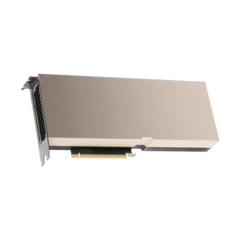NVIDIA H200 NVL 141 GB - 900-21010-0040-000
Graphics chip: H200 BUS: PCIe 5.0 x16 Memory size: 141 GB Theoretical performance FP32: 67 TFLOP Theoretical performance FP8: 3.958 TFLOP Cooling: Active
We can supply these GPU cards directly and with an individual B2B price. Contact us with your inquiry today.
All NVIDIA Ampere, NVIDIA Grace Hopper, NVIDIA Ada Lovelace and NVIDIA Blackwell GPU architectures are subject to a non-cancellable, non-returnable (NCNR) period of 52 weeks. Additionally, the product is subject to sanctions for certain countries and the end customer must be documented.
| Product code | 214.176835 |
|---|---|
| Part number | 900-21010-0040-000 |
| Supermicro Part No. | GPU-NVH200NVL |
| Manufacturer | NVIDIA |
| Availability |
In stock 0 pc
Stock allocation and delivery options
Transport company across Europe Thursday 26. 6. at the latest Wednesday 2. 7. |
| Supplier availability | In stock 13 pc |
| Warranty | 24 months |
| Weight | 2 kg |
| The price includes all legal fees | |
Detailed information
Floating point
Using the FLOPS unit, we can estimate the raw performance of graphics cards today. It indicates how many operations per second a graphics card can perform, allowing us to compare them against each other. However, these values can vary depending on the bit size of the floating-point (FP) representation. The larger the bit size, the more accurate the calculations, but also the fewer of them there are. Since gaming PCs need precise values for smooth operation, they mainly use 32-bit FP (or FP32). On the other hand, Deep Learning does not necessarily require such precise calculations, and therefore AI graphics cards use FP8. This drastically reduces the accuracy, but on the other hand increases the number of calculations.
Graphics memory
VRAM, these days primarily of GDDR type, is a synchronous memory, similar to standard RAM. However, in the case of graphic memory, memory chips with faster throughput and multiple data transfer rates are concerned. The result is a much faster buffering of data that the graphics card or coprocessor calculates and passes to the processor.
CUDA Technology
Users of professional applications can benefit from CUDA graphics stream processors thanks to CUDA architecture. Thanks to this, the raw power of the graphics card can be used for specific calculations, which can accelerate the work manifold compared to a classic processor, which is significantly limited by a lower amount of cores.
Active
The active type of cooling is widespread mainly due to the reliable method of lowering temperatures. It is cooling by air flow, most often consisting of one or more fans and its goal is to help create a vacuum inside the case thereby significantly improving the air flow that takes heat away from the graphics card out of the case. Active cooling of graphics cards is divided into axial cooling, common for traditional gaming graphics cards and radial cooling, which uses longitudinal airflow. This type of cooling is used, for example, by TURBO version of graphics cards.
PCI Express
PCI Express is an interface that usually takes the form of an expansion slot to ensure the modularity of the entire system, whether it is GPU, network cards, controllers, M.2 drives or other expansion cards. It is true that the newer the generation and wider the interface, the higher the performance and throughput. Most modern graphics cards use 16 lanes to connect with the processor. Currently, the most up-to-date generation is PCI Express generation 6.0 with a speed of 7.5 GB/s per lane.
Parameters
| Product line | Tesla |
|---|---|
| Architecture | Hopper |
| Gigabytes of memory | 141 |
| Number of stream processors | |
| Memory type | |
| Slot count | 1 |
| Monitor output | None |
| Profile | FH/LP |
| Interface | PCI-E 5.0 16x |
| Cooling type | Active |
| Power consumption (W) | 600 |














